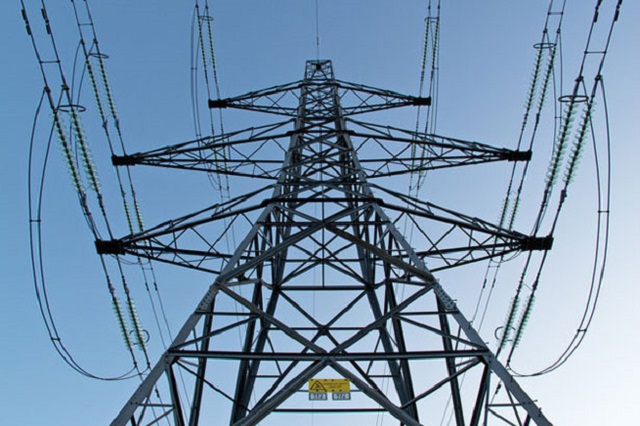Commentary: Powering Dutertenomics

Power supply in the Philippines has been tight, with reserves falling below alert levels due to unplanned power plant outages, increasing demand, and even changes in weather. Philstar.com/File photo
Last month, the Duterte administration pitched an ambitious economic plan, Dutertenomics, that could usher in a “golden age” of infrastructure for the Philippines. The plan, which entails massive infrastructure spending over the next few years on high-impact projects, is seen to create jobs, connect people and spur economic growth throughout the country.
One the pillars needed to sustain this economic growth is the availability of affordable and reliable sources of electricity. According to Department of Energy Secretary Cusi, from 2016 to 2030, 17,300 megawatts (MW) are needed to support the development plans of the government, while an additional 26,000 MW will be needed from 2030 to 2040.
Over the last few years, however, power supply in the country has been tight, with reserves falling below alert levels due to unplanned power plant outages, increasing demand, and even changes in weather. While additional power plants are scheduled to be completed over the next few years, the question remains if these plants can come on line in time; and if their capacities will be enough to meet the foreseen increase in demand.
In 2016, the Philippines’ three grids had a combined installed capacity of 21,387 MW. Based on Cusi’s projections, the Philippines will need to nearly double its installed capacity to sustain the country’s economic growth into 2030. And while 2030, which is over a decade away, may seem like a long time from now, taking into consideration our current barely-there reserves and the fact that it takes at least three to four years to build a single power plant, it only emphasizes the urgency of the country’s power situation.
One way government can speed things along is by recognizing power projects as projects of national significance, thereby fast tracking the permitting and licensing processes of new power projects. Currently, securing of hundreds of permits and licenses from the various national agencies and local government units is a drawn-out process that has long been an issue for power developers. All this red tape not only prolongs the building of needed power plants, but the cumbersome process also wards off prospective investors as well.
There was already talk last year in the DOE, the Philippine Senate and House of Representatives of passing legislation that would effect these changes. In the proposal of Sen. Sherwin Gatchalian, the chairman of the Committee on Energy, power projects of national significance would be given priority by compelling permit-giving government agencies to work within a specific timeframe. Furthermore, a one-stop shop for energy-related projects to cut redundancy in filing documentary requirements could also be legislated. Alternatively, since legislation can be quite a lengthy process in itself, this new energy policy could also take the form of an executive order from Malacañang. After all, fighting red tape and ease of doing business are priorities of the current administration.
Another step that government can take to address the power supply issues is to unify the country’s three grids. Currently only the Luzon and Visayas are interconnected, but by connecting the Visayas grid to Mindanao, it would allow over-supply in capacity to be transmitted from one grid to another.
The National Transmission Corporation (TransCo) is currently studying the possibility of building the interconnection itself using Malampaya funds. Alternatively, the National Grid Corporation, which manages the country’s transmission lines, says it can complete a Visayas-Mindanao grid connection by 2020 if it gets the go signal from government immediately.
In addition to urgently addressing the supply issue to support the nation’s economic growth, the government must also not overlook the impact of affordable power on consumers and the economy. Currently, the Philippines already has among the most expensive electricity prices, ranking third highest in the region, fourth in Asia Pacific and 16th highest worldwide.
Lowering the cost of electricity is one of the priorities of the current administration, and this is reflected in the DOE’s new fuel mix policy that shifts to a mix based on system requirements of 70 percent base load, 20 percent mid-merit and 10 percent peaking power. The new policy shows a shift away from the previous administration’s source-based approach, which had the effect of adding to the already high cost of electricity. The old approach resulted in higher costs because of the more expensive generation charges of some of the renewable energy generators, as well as from the additional feed-in-tariff charges given to these RE developers.
While the DOE’s current energy mix policy promotes competition among generation companies and could ultimately push electricity prices in the country lower, other policies seem to seek to achieve the opposite.
Just the other day, the Energy Regulatory Commission (ERC) announced the approval yet again of an increase in feed-in-tariff rates to be collected from consumers. Starting next month, TransCo, which manages the feed-in-tariff fund, will begin collecting an additional P0.0590 per kilowatt-hour in feed-in-tariff rates, bringing the rate up to P0.1830 per kWh. In addition to this, there are still more petitions filed with the ERC that would raise electricity prices, like yet another petition from TransCo to further increase feed-in-tariff fees and a National Power Corporation petition to hike universal charges.
While Dutertenomics will always be highlighted by the infrastructure projects the plan will build, the jobs it will create and the economic growth it will boost, the role that affordable and reliable electricity plays in this plan cannot be downplayed and should not be ignored.
Paco Pangalanan is the secretary-general of CitizenWatch and energy fellow with Stratbase Albert del Rosario Institute, a partner of Philstar.com.
- Latest





























